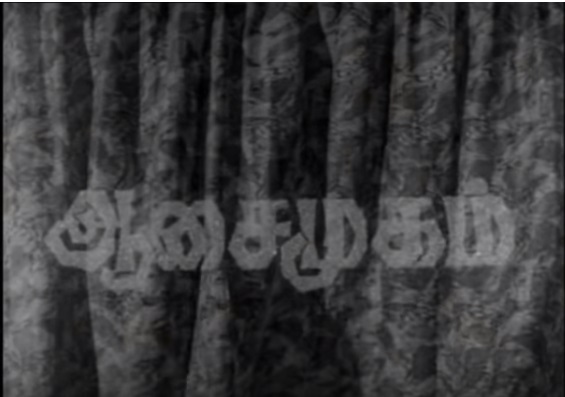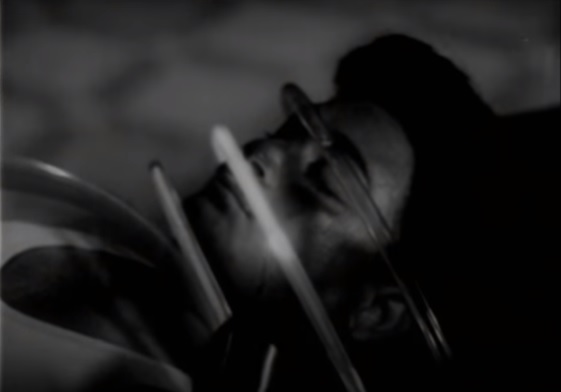This is part of a series where Silverscreen recommends films, documentaries, shorts, songs or scenes from seminal films that make for a compelling watch.
Easily the most charming thing about Aasai Mugam is an old curtain turned into a makeshift background for title credits. The curtain is not stationary. It moves gently now and then. But when MGR’s name flashes on screen, it seems to stand still.
Aasai Mugam is a classic. It has the usual plot elements – a do-gooder hero Manoharan (rich as Midas), a villain who would go to any lengths to vanquish the do-gooder (MN Nambiar as Vardanan) and a heroine who is sometimes a pawn, sometimes the queen (Saroja Devi). But, the film cements a place for itself in Tamil cinema history by introducing plastic surgery as an important plot point. Until then, Aasai Mugam seems like yet another drama with lovers who have to overcome several obstacles on their way to being a couple. With the plastic surgery spin however, life as Manoharan knows it, quickly becomes hell.
 Much before all this though, director B Pulliah gives us a taste of what it feels like to be a woman from the sixties. Saroja Devi and MGR fall in love over a song and dance. A marriage is quickly fixed, transcending all class, caste barriers.
Much before all this though, director B Pulliah gives us a taste of what it feels like to be a woman from the sixties. Saroja Devi and MGR fall in love over a song and dance. A marriage is quickly fixed, transcending all class, caste barriers.
But.
Life and love are not easy in the sixties. The free love movement probably never touched this bit of conservative South India, with its opulently dressed Zamindari characters who draw their life’s breath from their money and station in life.
Manoharan’s parents belong to this lot. They grudgingly agree to their son’s choice of a bride. Fate presents them with the perfect opportunity to rid themselves of a match they don’t understand. And through a series of events, Saroja Devi is abandoned at the altar. The actor, dubbed Abhinaya Saraswati, gives us twenty seconds of meme gold. She bites her lip, holds her heaving heart, as if those very things could stave off the pain of abandonment. I wondered why a fan saw fit to leave this comment on the YouTube link of the movie.
my heart actress B.sarojadevi. sarojadevi sarojadevi sarojadevi sarojadevi sarojadevi sarojadevi sarojadevi sarojadevi sarojadevi sarojadevi sarojadevi sarojadevi. my heart actor Purachai thalaiver M.G. ramachandran. so I always very like them.
This particular scene is reason enough.
When a marriage that could potentially topple caste and class barriers is an oddity in the sixties, imagine how they perceived such a thing as plastic surgery. The technicalities were perhaps ignored, for director Pulliah uses strange gimmicks to showcase how a mad doctor type transforms Vajravel (SV Ramadoss) to Manoharan. This gives way to a series of events through which Vajravel as Manoharan sets out to destroy the latter’s reputation. It is then that the real Manoharan faces conflict – unable to prove his identity and innocence, even to the one he loves.
For MGR, who has previously battled evil kings, relatives etc, this proves to be quite the quandary. For the person he is up against is himself. Perhaps the intent was to convey the message that only MGR is his equal. And that only someone who looks and acts like MGR can be a worthy foe for the actor. MN Nambiar can be defeated only so many times after all. Interesting is the way the unknown – plastic surgery – is aligned with the bad men in the movie. By association alone, it is tarred. It becomes an instrument of evil.

Personally, the best thing about the movie was the ways in which it lends itself to the many scenarios that play out in the film. ‘Aasai Mugam’ is Manoharan’s handsome demeanour. The face that Selvi fell in love with. ‘Aasai Mugam’ is also the face of greed. Vajravel takes on the face and form of Manoharan to take away his wealth. Ultimately, Pulliah and writers Arour Dass and Thuriayur K Murthy, want to reinforce the point that an ‘anbu ullam’ [a good heart] is what drives the world. Not an ‘aasai mugam’.
That’s the social message meant to keep it a notch above the commercial movies. Also, if you are like me and like genuinely baffling movie moments, watch it for the acid antidote the mad doctor offers as a way to distinguish between the real Mano and the poser.
Recommended
Vajravel writhes in pain as the acid tears into his skin and reveals his true form. Just then, Nagesh unleashes yet another of his delightful puns. With so much going on in our old films, who needs Netflix?
*****
Also read:
‘Panam’, A Reformist Social Drama With M Karunanidhi’s Dialogues
The Timelessness Of Onnu Muthal Poojyam Vare
‘Before My Eyes’, Mani Kaul’s Ode To Kashmir
A Group Of Youngsters Dissect The Idea Of India In ‘I Am 20’



